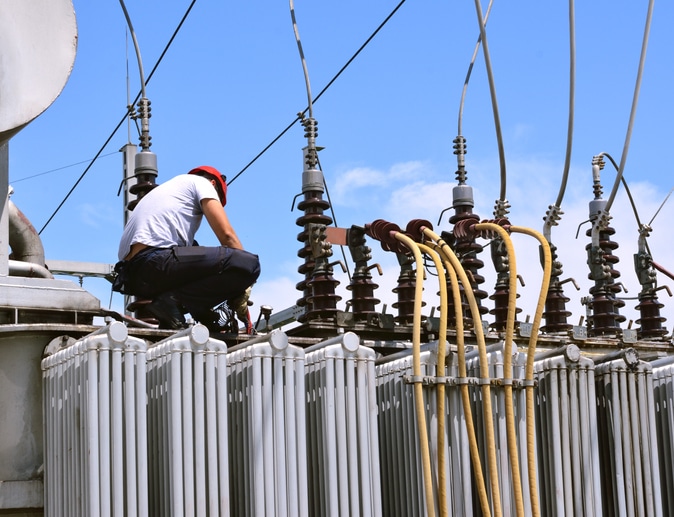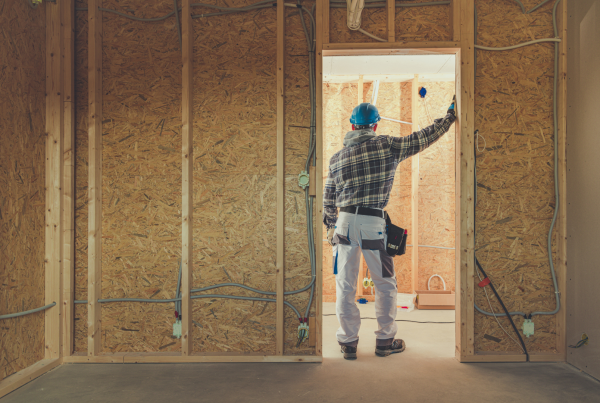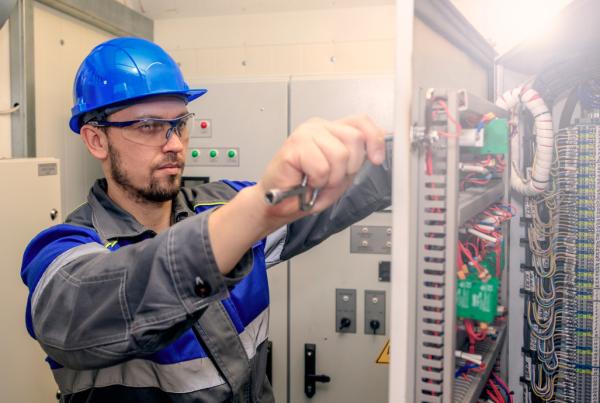In a previous article, we discussed what an electrical transformer is used for and the different types of transformers. It’s no secret that they are complex, involve a range of systems, and require regular maintenance and repair by licensed electrical contractors to operate at full capacity. So, why do transformers fail in the first place?
Unfortunately, determining the issue in a transformer isn’t as easy as troubleshooting a blown fuse. Several things can go wrong in a transformer and the issue can be mechanical, electrical, or plain human error.
So let’s take a closer look at things that electrical contractors – especially for larger commercial and industrial operations – consider when troubleshooting electrical transformer issues.
Common Transformer Issues In Commercial & Industrial Operations
One of the biggest factors that can lead to transformer issues is the age of the transformer. This bit of information can be very helpful to electrical contractors as they work to narrow down the list of potential issues. For example, if the transformer is 15-20 years old, the issues arising may very well be because of normal wear and tear.
On the other hand, newer transformers may face issues because of debris, dust accumulation, or animal strikes.
Older Transformer Issues
One of the most common issues faced by older transformers is insulation degradation. During normal operation, transformers tend to heat up quite a bit. These high temperatures can weaken the insulation over time and therefore lead to surges or damaged coils.
Overloading transformers can overheat the system, which leads to thermal degradation of the insulation. The insulation may get damaged repeatedly to a point where it can’t perform its function anymore. In this condition, the transformer can explode and damage the coil. Replacing the insulation isn’t as expensive as replacing the coil. So, it’s important to identify any issues before they become too extensive.
Damaged insulation can also lead to moisture absorption into transformer oil, which releases contaminated gas and may start a fire.
In its initial phase, thermal degradation presents itself as discolored cellulose.
Oil & Moisture Issues
Several issues can arise because of oil and moisture mixing, such as transformer tank leading, reduction in oil levels, poor oil filtration, and ultimately, burned equipment.
Mechanical Failures
Mechanical failures are issues that arise because of a physical issue, such as displaced or damaged parts. These issues can be caused by seismic activity, storms, and other issues that may rock, vibrate or physically act on the transformer. The best way to prevent these problems is to implement preventative and early maintenance routines in order to find signs and catch those potential mechanical failures. One of the tests that electrical contractors use to find these issues is the Frequency Response Test or an induced voltage test.
Electrical Failures
Electrical failure is usually associated with transmission issues such as line surges (which is one of the most common transformer issues), voltage spikes, and line faults. The best way to prevent this type of failure is by using high-quality surge protectors and scheduling regular maintenance by expert electrical contractors.
Skyline is dedicated to using only the best parts and offering lasting solutions to your electrical needs. If you need help with your electrical transformer or any other electrical system, we recommend getting in contact with us today.




